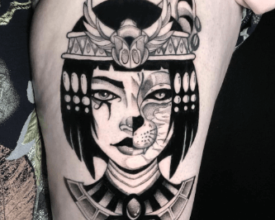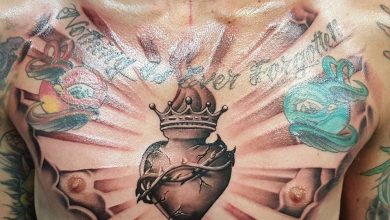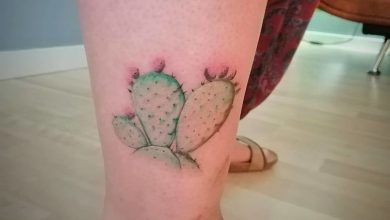Tattoo Pain Chart: the Most Painful Spots to Get Tattooed
- tattoo pain will vary based on age, gender, and pain threshold.
- the most painful places to get tattooed are the ribs, spine, fingers and shins.
- the least painful places to get tattooed are the forearms, stomach and outer of the thighs. .
Getting a tattoo involves a needle filled with ink repeatedly piercing the skin. consequently, it’s not unusual to wonder how much pain to expect when considering a tattoo.
It turns out that pain is a very subjective experience, and the discomfort you feel while getting tattooed can depend on a couple of factors, including your biological sex, pain tolerance, and most importantly, the area of your tattoo. tattooed body .
more and less painful points to get the tattoo
Most of the data on tattoos and pain is anecdotal, but some general rules apply. The most painful places to get tattooed are usually bony and have very little fat covering them, says Gianna Caranfa, a New York tattoo artist.
Quick tip: Caranfa says a simple “pinch test” can help you understand how pain can vary depending on where you get tattooed: “Imagine the areas that hurt when you get pinched. The inside of the bicep would hurt more from a pinch than from the upper forearm, this also relates to tattoos.”
The most painful areas for everyone include:
- feet
- ribs
- spine
- stomach
- fingers
- chest</ li
- knee
- elbow
- shin
- neck
- groin
- head and face </li
- the bony part of the ankle
Less painful areas to tattoo include parts of the body with thicker skin and more oiliness, including:
- forearm
- hands
- shoulder
- parts of the back
- back of the arm
- stomach
- outer arm
- outer thigh
How much do tattoos hurt?
There is no one size fits all answer when it comes to how much pain you will feel when getting a tattoo. But if you’re wondering what kind of pain to expect, Caranfa says the experience is comparable to the sensation of a cat scratch or a sunburn.
“The long periods of irritation and sensitivity are what make you feel some discomfort,” says Caranfa. “the feel of a tattoo needle is very dull compared to a syringe [and needle], it’s not the needle that causes discomfort but the prolonged sensitivity of being tattooed.”
More importantly, different people will report different experiences of pain based on their individual nervous systems and pain thresholds, says Channelle Charest, a California-based tattoo artist and co-founder of tattoo scheduling platform tatstat.
Other factors that could affect pain during tattooing include:
- Age: Studies suggest that aging decreases sensitivity to pain, which means older people may experience less pain when tattooed. Researchers have yet to determine why this happens, but keep in mind that the size of the parts of the brain that process pain decreases with age.
- gender: People who are biologically female are more likely to experience higher pain intensity, lower pain threshold, and lower tolerance to induced pain compared to females. people who are biologically male. however, research is still emerging.
- Psychological Expectations: If you get a tattoo expecting it to be an excruciating experience, this could affect the amount of pain you actually feel. studies suggest that people who feel anxious and “catastrophic” pain before a procedure often experience higher levels of pain intensity and distress than people with “neutral” pain expectations.
Important: People may experience increased sensitivity to pain during menstruation.
Hopefully, most of the discomfort you feel while getting a tattoo will end when your tattoo artist puts down the tattoo gun.
“The feeling is only when the needle is inside you,” Caranfa says, adding that while it’s typical to experience some soreness, swelling, and itching in the days after the tattoo, “it’s not debilitating.”
insider point
It’s natural to feel nervous about the pain of getting a tattoo, but there are steps you can take to prepare yourself and make the process a more pleasant experience.
“Make sure you eat an hour before you go, drink plenty of water, and wear comfortable clothing,” says Charest, and always be forthcoming and honest with your artist if you need to take a break while getting tattooed.
If you’re really concerned about the pain, you may choose to use an anesthetic cream. remember to avoid NSAIDs or drinking alcohol before getting tattooed as they can thin the blood and cause excessive bleeding, making it difficult for the tattoo artist to do their job.



